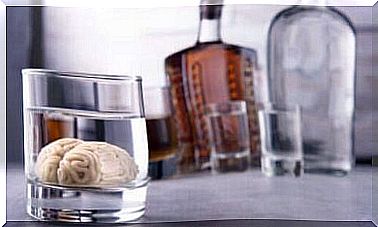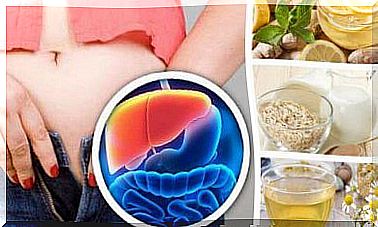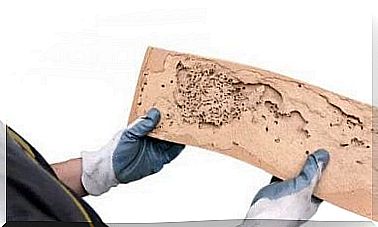Nephrotic Syndrome In Children: Causes And Treatment

Nephrotic syndrome in children is quite rare. According to statistics, its incidence is 15 per 100,000 children, according to the Spanish Association of Pediatrics.
What exactly is this disease? What are its causes and possible treatments? We’ll tell you about all of this later in this article.
What is nephrotic syndrome in children?
To understand what this syndrome is, we first need to understand how the kidneys function. These two bean-shaped organs are located just above the hip and are responsible for filtering the blood so that:
- Remove harmful waste products from the body, including excess water.
- Retain essential body components such as potassium, phosphorus and sodium from the blood and return them to the bloodstream.
Each kidney has about a million nephrons, small organs that contain a special filter called the glomerulus. The glomeruli are responsible for clarifying and filtering the blood plasma. However, when they stop working properly, they start to donate too much protein to the kidneys.
One of the functions of proteins, especially albumin, is to maintain an adequate amount of fluid in the bloodstream.
Thus, when proteins pass into the urine (that is, into a mixture of excess water and metabolic waste), the fluid “escapes” from the blood. Consequently, it can cause swelling in the limbs, arms, hands and other parts of the body.
Symptoms of nephrotic syndrome in children
In children suffering from nephrotic syndrome, in addition to the high presence of protein in the urine, sudden weight gain and swelling can be observed in areas such as:

- Belly
- The face, especially around the eyes.
- Limbs where the swelling is mainly in the ankles and toes, especially after sitting or standing.
While the symptoms listed above are the main and most obvious symptoms of the disease, they are not the only ones. A child with nephrotic syndrome also experiences abnormalities such as those listed below:
- Diarrhea
- Rare urge to urinate
- Dark and foamy urine.
- Tiredness
- Abdominal pain
- White skin around the nails.
- No appetite
Nephrotic syndrome in children – 3 causes
Nephrotic syndrome in children, which occurs most often, is idiopathic in nature. It affects 90% of children between the ages of 2 and 12 who suffer from this disease.
The term idiopathic refers to the inability to definitively and unequivocally determine the cause that causes the nephrotic syndrome.

Typically, these children suffer from minimal changes in nephropathy. This means that their kidneys are not working properly but cannot be detected with a microscope. The kidney tissue appears to appear normal and therefore it is usually impossible to pinpoint the cause of the problem.
The second most common cause in children is childhood diabetes, which can damage the kidneys by affecting the glomeruli. In this way, it may prevent them from working properly, separating harmful products of metabolism from components useful for the body.
Genetic mutations occupy the third place in the list of causes of nephrotic syndrome. In the latter case, the nephrotic syndrome is referred to as genetic.
However, if it occurs in children who are under 12 months of age and have nephrotic syndrome, in this case it is called congenital nephrotic syndrome.
Possible treatments
If you suspect your baby has nephrotic syndrome, don’t hesitate to consult a doctor as soon as possible. It will likely ask for a urine sample to analyze and verify the existence of excess protein, or proteinuria.
Then the specialist will try to determine the causes that are causing your child’s disease. This, in turn, will allow him to choose the best possible treatment. Your doctor may also need to perform blood tests at this stage .
In addition, he sometimes even orders a kidney biopsy. This type of specialized test involves taking a small sample of kidney tissue for microscopic analysis.
Regarding treatment, a pediatric nephrologist usually recommends corticosteroid-based drug therapy. The exceptions are cases with congenital, family and syndromic symptoms.

If there are side effects or resistance to corticosteroids, your doctor may also prescribe medications such as cyclophosphamide, mycophenolate mofetil, and eventually diabetes medications.
In addition, your doctor may suggest the use of diuretics to combat swelling. For the same reason, a low sodium diet is recommended for children suffering from this disease.
Children with genetic, syndromic, or familial nephrotic syndrome usually do not respond to treatment. However, there are studies that suggest a good response to immunosuppressants in patients with mutations. It will be up to the specialist to determine the best treatment according to your child’s specific conditions.
Nephrotic syndrome in children is the most common form of primary glomerulopathy. Make an appointment with your pediatrician if you think your child may be suffering from this. He will assess the need for consultation with a pediatric nephrologist. As always, we remind you: no one can advise you better than a specialist.









